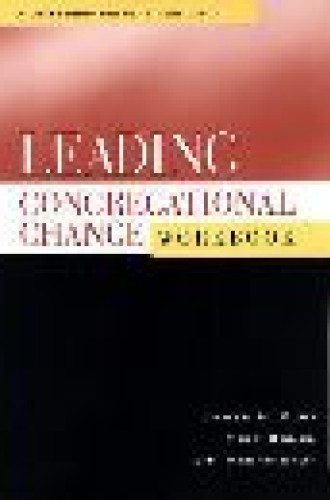Church market
Until recently, studies of church growth examined why—why denominational growth is happening in some places and not in others. In their search for answers, experts contrasted conservative with nonconservative denominations and examined ideological and theological distinctions. Now the focus is on congregations and how to make them grow. The new language is one of promotional methods and congregation-building processes, all of them designed to exploit a highly segmented religious marketplace and capture a market niche of church members.
All the books reviewed here take pains to say that congregational size is not a measure of success or failure. But the implicit message is unmistakable: congregations must come to terms with their changing social contexts or pay the price of numerical decline. And if congregations find themselves in the midst of numerical decline, it’s because they have failed to come to terms with their changing circumstances.
Cynthia Woolever and Deborah Bruce are researchers at the Louisville headquarters of the Presbyterian Church (U.S.A.). Their Field Guide, a slim but fact-filled volume, is modeled after an exhaustive study of congregations in Australia. Woolever and Bruce paint a portrait of U.S. congregations based on the questionnaire responses of over 300,000 worshipers in over 2,000 congregations.
Among their findings is the “50-40-10” pattern. Fifty percent of all churchgoers are involved in roughly 10 percent of the congregations; conversely, 10 percent of churchgoers are enrolled in 50 percent of the congregations. This means that half of all congregants are in the largest congregations, while half of all congregations (often churches of under 75) claim only 10 percent of congregants.
A series of sidebars warns against “myths,” and one of them is that “congregations grow by attracting new people who are not attending religious services elsewhere.” Actually, only 7 percent of congregational “newcomers” (members for under five years) are first-time members. The overwhelming majority of newcomers are transfers (75 percent) or returnees (18 percent). And newcomers make up only one-third of the respondents, which means that first-time members account for only 2 percent of the churchgoing population.
Another myth is that “congregations have difficulty adapting to the changing world around them because the majority of worshipers are not open to change.” In fact, six out of ten respondents felt their congregations were willing to try new things, and more than half indicated that their congregations are “already considering or implementing new directions.” Finally, one in three members have been involved in their churches for fewer than five years—a mobility rate that makes ongoing institutional adaptation essential.
The authors include a description of the typical worshiper: female, 50 years old, employed, well educated, married and white. What the typical worshiper values most in the congregation is “sharing the sacrament of Holy Communion, the sermons or homilies, and traditional worship and music.”
Jackson W. Carroll and Wade Clark Roof, researchers in the sociology of religion (at Duke University Divinity School and at the University of California–Santa Barbara), analyze three age categories—pre-boomers (born prior to 1946), boomers (born 1946-1964) and Gen Xers (born between 1965 and 1980)—who according to Carroll and Roof have profoundly different expectations of the church and of religion. Nine case studies from North Carolina and southern California form the core of the book.
Some congregations ignore the generational rifts. These traditional or “inherited model” congregations are often faced with an aging population of pre-boomers and an increasingly restive junior contingent. Other congregations “blend” generations by designing programs that appeal to multiple groups. Boomers and Gen Xers are the most similar and are most likely to be served by blended congregations. But blended congregations often bifurcate into groups with separate worship services and separate constituencies uneasily housed in the same setting.
A third cluster of congregations is generation-specific and caters to the cultural and devotional needs of a particular age group. The most progressive of these churches target Gen X adults, many of them single, who seek contemporary worship and music as key elements of their spirituality. Small groups, directive but nonjudgmental Bible study, and activity-based undertakings are essential for this audience.
While these authors approach congregations with the semidetached perspective of concerned observers, other writers seek to present paradigms for transformation and renewal. Carl S. Dudley and Nancy T. Ammerman, both professors at Hartford Seminary’s Institute for Religion Research, run workshops on congregational change, and they bring together the analyst’s sensitivities and the consultant’s enthusiasms.
Congregations in Transition is the most engaging of these “how to” guides. It celebrates congregations as layered communities thick with cultural baggage and tradition as well as promise and challenge. While acknowledging that change is necessary and usually conflict-producing, they invite their readers (and their congregations) into a process marked by “playfulness” and humor. They suggest strategies for calling the historical culture of a congregation to the fore and then challenge congregants to weigh that endowment in the face of current demands and possibilities. “Use your congregation’s history as a resource for change, to explore together your past and to weave these facts, events, and stories together to explain the present and open new options for the future. Have fun . . .”
Differences of opinion, vision and memory will sometimes lead to open conflict. The authors encourage congregations to deliberately acknowledge conflicts, seek out their sources and their implications. Why do people view their common experiences with such contrasting lenses? What implications do those perceptions have for the future?
Dudley and Ammerman offer exercises for congregations facing change. In each case, the contingent nature of the experience is held up: this may work; some people may want to participate. One exercise involves creation of “timelines” that trace the history of the congregation, its ministry and its community. These visual histories— complete with news clippings, photographs, and vignettes of personal experience—should be displayed for the congregation to observe and discuss.
Dudley and Ammerman recognize that congregations morph into all kinds of futures. They lay out five options that congregations follow, among them “moving” and “dying.” Their stark acknowledgment of a congregation’s death is consistent with the authors’ commitment to celebrating the peculiar culture of each congregation. Some change into something new; others close their doors in God’s good time. Churches that die are not “failed” congregations, but churches that have chosen a particular transitional route. The authors want churches to choose with their eyes open and their hearts light.
As the title suggests, Cracking Your Congregation’s Code assumes that each congregation has its own inherent identity. Richard Southern and Robert Norton, who cofounded Church Development Systems and have counseled hundreds of congregations in renewal and growth, want to lead congregations to “successful” change. Success implies institutional growth; death is not an option. Southern and Norton are committed to reaching a broad-scale religious audience, and claim that their principles work across the theological spectrum. But they have a special affinity for the mainline.
Southern and Norton propose an exercise of self-discernment as a way to identify a congregation’s true “spiritual DNA.” They teach congregations to find their essential character and then to build on it. Having captured this character, congregations are invited on a WelNES journey, which leads from Welcoming through Nurturing and Empowering to Service. In contrast to the playful tone of Dudley and Ammerman’s exercises, the model of change here is carefully orchestrated.
Subheadings suggest their painstaking thoroughness. “What Are Small Groups Called?” asks one such subheading, then answers with “covenant and care group,” “connections circle,” “TLC group,” “heart-to-heart group” and many others. Every congregation should hammer out a consensus-based “mission” statement and an accompanying “vision” statement. A vision team will consider congregational progress in light of the mission and vision statements. How is the congregation doing? What adjustments need to be made?
Echoing Carroll and Roof, Southern and Norton suggest that one of the challenges facing congregations is a generational one. They discourage readers from trying to make easy bridges or blends. Pick a target generation, they suggest, and work with it.
Instead of looking to the culture of the congregation as key to change, Jim Herrington, Mike Bonem and James H. Furr focus on leadership. Beginning in the Greater Houston area with a program called “Mission Houston,” they have promoted congregational renewal through entrepreneurial leaders who feel themselves to be Spirit-led. Given the waves of change that course through the larger society, they reason, it is inevitable that congregations will be buffeted. Visionary leaders are needed to anticipate those currents and get ahead of them.
Although they say they do not intend for the minister to dictate his aims for the church, the thrust of Leading Congregational Change is that the pastor or transformational leader brings a vision that must be promoted, first to a chosen group of disciples, then to a “vision community,” and then—only when fully developed and plotted out—to the congregation. Each step will lead through eddies and undercurrents, they warn. Movements of change provoke resistance, which must be met with greater resolve. The leader must be ready to take considerable heat along the way, but the God-centeredness of the leader’s vision will prevail.
Much of their narrative anticipates and even revels in the cultural clash “caused by” those who feel threatened. The authors recommend that such defensive souls are better off elsewhere, and suggest that people’s resistance to the divinely inspired vision raises questions about their faithfulness.
One of the authors’ examples is Glenwood Community Church, founded in 1986, which grew to 225 people in worship by 1991. The pastor felt that the church was neglecting the unchurched, and he came back from a seminar at Saddleback Community Church with “a clear sense of God’s mission.” He was surprised when many in the congregation responded with anger and frustration. Attendance dropped to 80 people during the next year, and the congregation was deeply in debt. But the pastor’s vision prevailed, and “by 1998, the church was averaging 50 baptisms per year and 635 in attendance.” One wonders about the religious fate of the 145 parishioners who were not moved by the pastor’s vision.
At times Leading Congregational Change reads like an unwieldy meeting of personal-pietist and secular-organizational sensibilities. It bogs down in a rhetoric that reflects both management and church growth gurus. Peter Senge, Steven Covey, J. R. Katzenbach, D. K. Smith, George Barna, Speed Leas and Lyle Schaller make appearances, as do biblical church planners Isaiah, John, Paul, Luke and (especially) Nehemiah. The forced analogies between Bible passages and modern principles of management are awkward and seem like holy window-dressing.
In a culture in which change is a constant, churches must consider how they can transform themselves to meet their missions. But it is arrogant to suggest that the only authentic condition of congregational life is one of perpetual—especially artificially engineered—change and to think that one can measure a congregation’s faithfulness by its capacity to leave its tradition behind. And it’s presumptuous to suggest that “transformational leaders” are imbued with an elevated insight into the divine order of things. As congregations take the measure of carefully chosen market niches and strive to spin effective recruitment strategies, they must also claim their own cultural contexts, complete with human foibles and nuances. Otherwise process will overwhelm substance.









